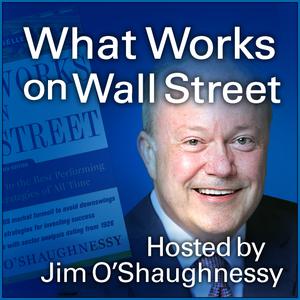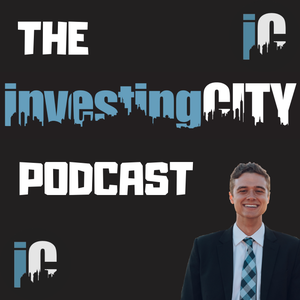
What Works on Wall Street Podcast
Jim O'Shaughnessy
- 33 minutes 32 secondsHelping Advisors with ESG Challenges (EP.13)
Jim O’Shaughnessy and OSAM PM Travis Fairchild discuss Travis’ recent paper on ESG. The discussion focuses on using Custom Indexing and technology to solve many of the challenges advisors face in aligning client portfolios with unique client values.
31 March 2021, 9:30 am - 38 minutes 39 secondsThe Case for Small Cap Stocks
OSAM Portfolio Manager Travis Fairchild and Associate Jamie Catherwood come on to discuss their April paper titled ‘The Historic Opportunity in Small Cap Stocks’
16 September 2020, 9:30 am - 35 minutes 25 secondsThe Factor Archives: Value (EP.11)
Price is one of the most predictive determinants of future alpha and investors have recognized this since the first value fund was founded in 1779. While market environments and the methods of equity valuation have changed, the concept of purchasing stocks at discounted prices has persisted for centuries.
24 February 2020, 10:30 am - 23 minutes 56 secondsThe Factor Archives: Shareholder Yield (EP.10)
Although buybacks are constantly in the news, they have benefitted investors for centuries. In this episode, Jim and Jamie discuss the relationship between capital allocation and returns, 17th century dividends, 18th century buybacks, and a time when government authorities mandated buyback programs in the U.S.
18 December 2019, 10:30 am - 54 minutes 26 secondsThe Factor Archives: Momentum (EP.09)
Momentum is rooted in human nature and behavioral biases. This episode is a little different than other WWoWS episodes, as it was originally for guest Jamie Catherwood’s own history podcast, of which Jim was the first guest. However, enjoy this dive into the first ever book on behavioral finance. Find Jamie’s corresponding article here: https://osam.com/Commentary/the-factor-archives-momentum
14 December 2019, 10:30 am - 41 minutes 7 secondsESG The Right Way (EP.08)
Jim O’Shaughnessy and OSAM PM Travis Fairchild discuss Travis’ recent paper on ESG. The discussion focuses on the right and wrong approaches to ESG, the Canvas platform, and how factor investing ties into ESG.
13 December 2019, 10:30 am - 23 minutes 25 secondsThe Factor Archives: A History of Factor Investing (EP.07)
While they may not have been known by the same names, many modern investment factors have historical roots stretching back centuries.
20 November 2019, 8:00 pm - 34 minutes 15 secondsFactors from Scratch (EP.06)
A look back, and forward, at how, when, and why factors work
20 September 2018, 2:31 pm - 32 minutes 21 secondsNegative Equity, Veiled Value, and the Erosion of Price-to-Book (EP.05)
The price-to-book ratio has a problem. Accounting distortions are causing record numbers of U.S. companies to report negative book value and more and more cheap companies to be defined as expensive growth companies (Veiled Value Stocks). Join us on this “What Works on Wall Street” podcast to learn more.
8 May 2018, 1:10 am - 23 minutes 26 secondsA Returns-Based Approach for Allocating U.S. Microcap into Equities Portfolios (EP.04)
“Traditional” asset allocation favors capacity-based frameworks that are overly-reliant on flawed market cap-weighted indexes. Also, that approach fails to make adjustments for investor risk tolerance or plan size. Investors who use a returns-based approach instead — adding Micro and Small Cap into the equities mix — can expect to see stronger returns and lower volatility. Join us on this “What Works on Wall Street” podcast to learn more...
1 December 2017, 1:58 pm - 27 minutes 24 secondsFinding the Factor Alpha in REITs (EP.03)
According to our research, the efficacy of factor signals in real estate investing has largely been upstaged by the factor revolution in the equities market. In fact, the public real estate market is uniquely inefficient and a fertile ground for active, factor-based investing…
10 October 2017, 9:30 am - More Episodes? Get the App
Your feedback is valuable to us. Should you encounter any bugs, glitches, lack of functionality or other problems, please email us on [email protected] or join Moon.FM Telegram Group where you can talk directly to the dev team who are happy to answer any queries.
 Planet MicroCap Podcast | MicroCap Investing Strategies
Planet MicroCap Podcast | MicroCap Investing Strategies
 The Latticework Podcast, presented by MOI Global
The Latticework Podcast, presented by MOI Global
 Focused Compounding
Focused Compounding
 Flirting with Models
Flirting with Models
 The Investing City Podcast
The Investing City Podcast
 Infinite Loops
Infinite Loops